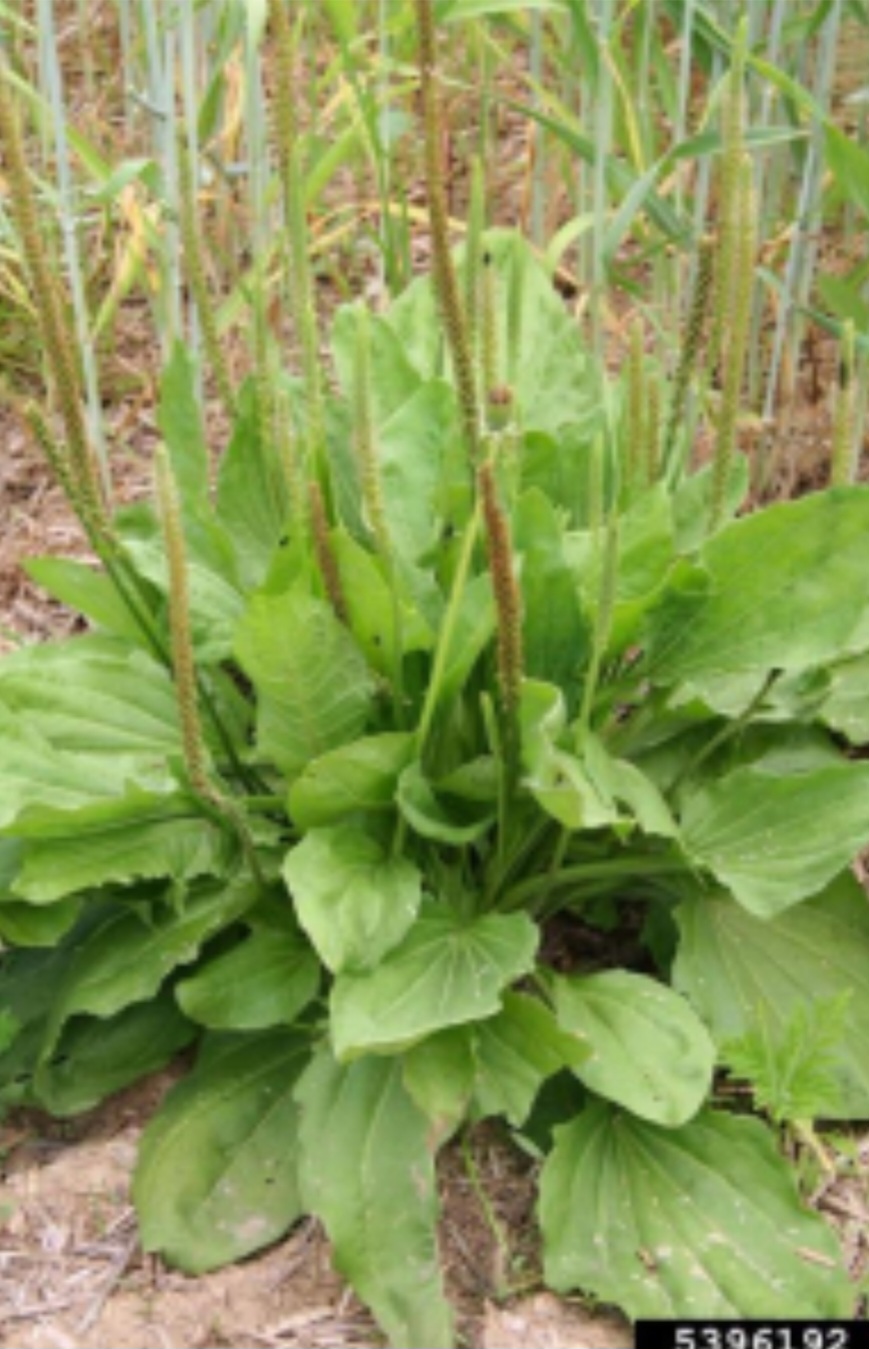Weed Of The Month: Common Plantain
 | Author:
Allison Kosto, MSU Broadwater County Extension Agent
MSU Broadwater County Extension Agent |
Weed of the Month: Common Plantain
Allison Kosto
MSU Broadwater County Extension Agent
A widespread lawn weed, common plantain, is also known for its medicinal properties and edible qualities. Common plantain is also called broadleaf plantain. It is believed to have antimicrobial and antioxidant attributes and has a history of a wide range of uses including boosting the immune system, treating ulcers, diarrhea and fatigue, and treating foot injuries. Its young leaves, which look like spinach, can be used in salad.
Description & Habitat:
Native to Europe, common plantain was introduced to North America in the seventeenth century as an edible and medicinal plant. It is now widespread across North America including throughout Montana. It is most commonly found in lawns and gardens but can be seen in a broad range of habitats including disturbed areas, meadows and fields. It can handle trampling and compacted soils.
Common plantain is a perennial plant (life cycle of more than two years). It forms a rosette close to the ground with a long leafless flower spike. The spike has small inconspicuous green to white flowers. Each plant can produce up to 20,000 seeds which can remain viable in the soil for up to 60 years. Leaves are oval, much like spinach. They have a smooth and almost leathery texture. Common plantain has a shallow fibrous taproot. It does not have a visible stem.
Common plantain reproduces by seed. However, it has a low growing structure that makes it difficult to control, especially in turfgrass systems. It has the ability to regrow from pieces of its root crown and is resistant to several types of herbicides.
Management:
Maintaining a healthy and dense lawn or plant community will help reduce common plantain. Mowing and grazing is not effective, because the plants will regrow from the roots. Hand pulling can be effective to prevent the plant from going to seed. Make sure to get the entire root system so that it can not regrow. A little moisture in the ground helps with pulling. Mulching is an effective control method where practical. Landscape fabric or organic mulch at least 3 inches thick is necessary.
Herbicide can be effective and can often be strategized through spot spraying. Common plantain has shown resistance to 2,4-D. Commonly used chemicals include Banvel, Trimec and Remedy. Tank mixing with more than one herbicide is ideal. Preemergent herbicides can also be effective in lawns and perennial landscape areas. Always read and follow the entire label when applying herbicide. Common chemical names are used for clarity but does not imply endorsement of a product or brand.
For assistance on weed identification and management, contact the MSU Extension Office in Broadwater County at 406-266-9242.
Article Images
Click on Image Thumbnail(s) to view fullsize image
PhotoCredit: Photo Credit: Robert Vidéki, Doronicum Kft., Bugwood.org
Image 1 Caption: Common Plantain
Photo Credit: Robert Vidéki, Doronicum Kft., Bugwood.org
